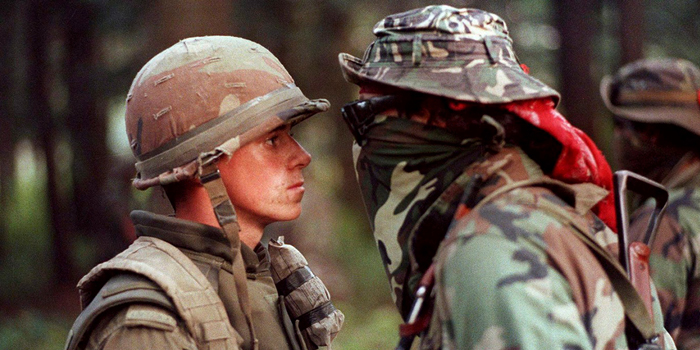During the summer of 1990, a centuries-long land dispute between Mohawk members of the Kanehsatà:ke community and the Canadian government developed into an armed confrontation that would last for almost three months. The conflict broke out because of a proposed golf course expansion in Oka, a small town roughly 60 kilometers west of downtown Montreal. Abenaki filmmaker Alanis Obomsawin was present at the time of what has now come to be known as the Oka Crisis, and recorded over 250 hours of film from the protesters’ side of barricades erected to block outside access to the contested land. On Jan. 15, as the first part of its Indigeneity & Solidarity Event Series, SSMU Indigenous Affairs screened the final product of Obomsawin’s work covering the Crisis: The 1993 feature-length documentary and winner of 18 Canadian and international awards, Kanehsatake: 270 Years of Resistance.
The film certainly deserves its accolades. It serves as a mosaic of the Crisis’ chronology, from its origins in French colonialism and the (in)actions of Oka Mayor Jean Ouellete, to the eventual end of the standoff in September 1990. While including every single bit of minutia may be difficult, Obomsawin effectively presents as much detail as humanly possible in two hours.
The style employed throughout the film sorts the chaos of clashing perspectives into a cohesive, digestible format for its viewers. Unlike other documentaries which feature a narrator to guide their audiences with supplemental exposition, Obomsawin simply lets individual people and their actions speak for themselves. She depicts the tensions between Mohawk protesters and members of the Canadian Army in vivid detail. At one moment, the audience witnesses a confrontation that culminates in the beatdown of a protester; at another, protesters plead with the government to send an ambulance for another victim of police brutality.
The use of state violence works as a central theme throughout the film. While Obomsawin focuses largely on the atrocities as they occurred, Kanehsatake’s final scenes look back on the Oka Crisis after its first anniversary. Oka’s population re-elected Jean Ouellete as mayor. Many suffered physical injuries and trauma from their experiences. Despite everything that has transpired, the land claim dispute that prefaced the entire ordeal remains unresolved to this day.
SSMU Indigenous Affairs used this screening to draw attention not just to the Crisis and the aftermath of government actions on the Kanehsatà:ke community, but also to reflect on the legacy that colonial history has on Canadian society. After the screening, a discussion took place with Mohawk journalist Taiorenhote Daniel David, who shared some of his own experiences at Oka. Participants also talked about present-day resistance in the Internet-era.
In a Facebook post on the event’s page, SSMU Indigenous Affairs described the reasoning behind the screening and discussion.
“Although the documentary focuses on the events of 1990,” the post read. “We are talking about systemic issues which persist today. An important step forward is to be aware – of what has happened in the past, of what continues to this day, and of the work of those fighting for a better future.”
Here at McGill, they hope that the Indigeneity & Solidarity Event Series will enable both Indigenous and non-Indigenous students to “learn about and reflect on Indigenous identity and solidarity both inside and outside of the university setting.”
The Series will feature several more events throughout this semester, culminating in an all-day conference hosted in partnership with the Indigenous Student Alliance on March 24.








